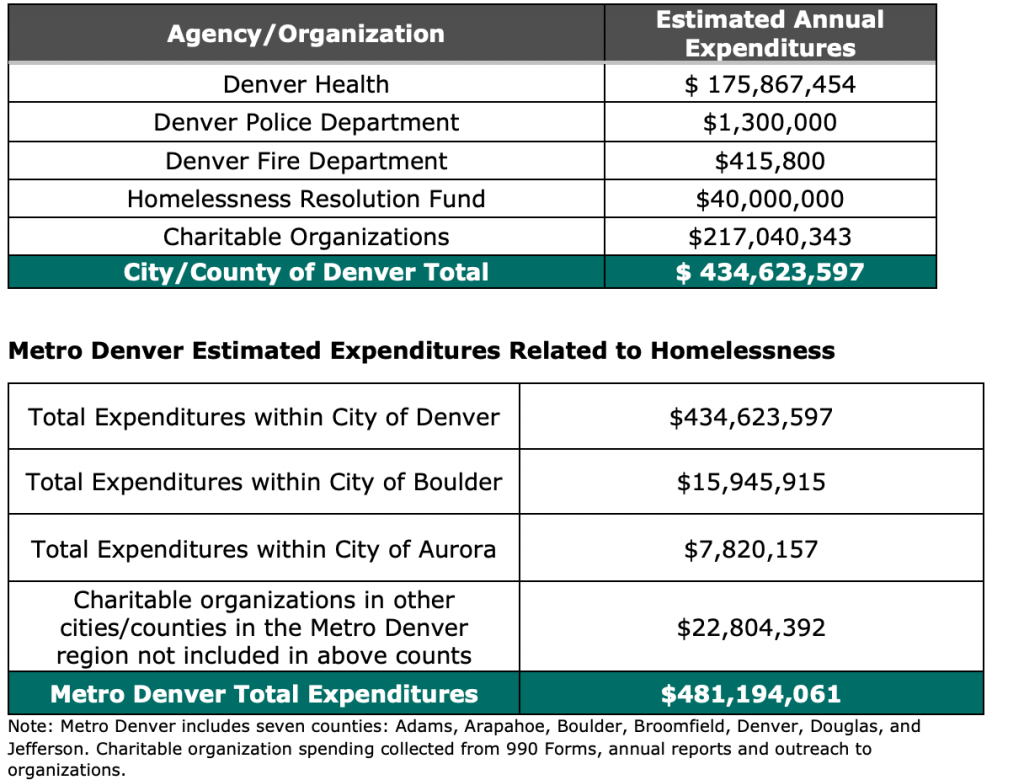Taxpayers spend more per year on the homeless than they do children in K-12 public education schools, according to a new study examining the economic footprint of homelessness in the metro area.
Within the City of Denver, the range of spending per person experiencing homelessness is $41,679 per person to $104,201 per person depending on the type of count used. In comparison, spending per pupil for K-12 education in Denver Public Schools is around $19,202.
The study by the Common Sense Institute showed an estimated homeless population last year of 4,171 in the City of Denver, and 6,104 in the Denver Metro Region that includes Adams, Arapahoe, Boulder, Broomfield, Denver, Douglas and Jefferson Counties.
The study found $481.2 million was spent annually on shelters, healthcare and other services, but that does not include the full array of charitable organizations, public agencies, or health care and emergency response systems dedicated to serving the homeless population of 4-6,000.
Just as extraordinary are the number of employees and volunteers dedicated to helping people experiencing homelessness.
In Metro Denver, there are 4,000 to 7,000 employees from government agencies and organizations, while the number of volunteers ranges from 55,000 to 85,000.
And yet, there are only 2,200 transitional housing beds of which 72% were occupied.
Emergency shelter beds total 3,561 and had an occupancy rate of 88%.
“The Denver Metro region is investing a significant amount of funding — nearly half a billion dollars annually — to prevent and resolve homelessness,” the report said.
“As the number of people experiencing homelessness continues to rise and as communities recover from COVID-19, now is a critical time to assess the ecosystem,” the report said.
The study was the first of several that are forthcoming from the Common Sense Institute.
Also interesting to note in this study of the economic footprint of homelessness, is the number of jobs being homeless supports in just one metro area, and that it puts half a billion dollars a year into the local economy without actually solving the problem of housing 4-6,000 people.
With that kind of money, a person could afford to pay rent.

